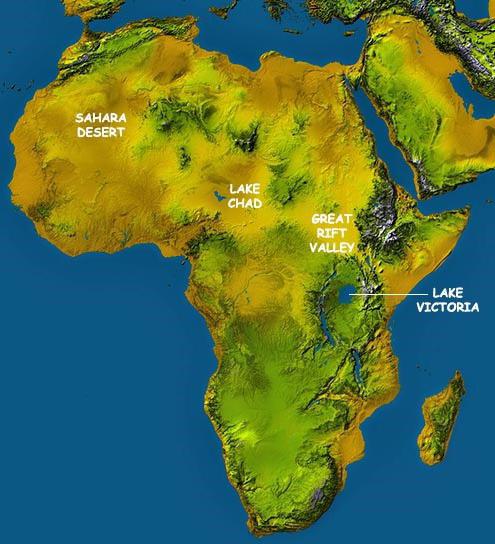Forming the characteristics of the African climateoccurs under the influence of various factors. The continent is located within seven belts. Due to the fact that the equatorial line crosses Africa almost in half, the climatic zones are repeated from the equator and to the borders of the continent. It should be noted that the conditions under which weather occurs, to the south and north of the middle of the continent have their own characteristics. To a greater extent this is due to the fact that the area of the northern part is twice as large as the area of the southern region of the continent. In addition, the southern subcontinent lies between the Indian and Atlantic Ocean. Of no small importance is the neighborhood with Eurasia, from which the north and north-east of Africa is separated by warm intercontinental seas (Red and Mediterranean). On the territory of the mainland, two tropical, two subequatorial and equatorial belts are distinguished. In the subtropics lie the extreme North and the extreme South Africa.
The climate of the coast of the continent is formedinfluence of sea currents. The north-western, eastern, south-western regions are characterized by low humidity. This is due to the influence of the Canary (cold) current. The south-eastern and western shores are more humid. Here the climate of Africa is influenced by warm currents (Mozambique and Guinea).
The main part of the continent lies betweentropics, in connection with which it receives a lot of solar heat and very well warms, especially on a vast northern territory. The prevalence of high temperatures makes the climate of Africa the hottest on the planet.
Some uplifting of thecompared with the internal area contributes to the formation of the continentality characteristic of the continent. This is particularly pronounced in the northern part, due to its size and proximity to Eurasia.
The climate of Africa is mainly formed under the influence of the trade-winds and subtropical peaks of both hemispheres.
In the Sahara (in North Africa)dry north-western and northeasterly winds predominate. A southwest monsoon blows towards them, bringing the moist air and rain to the territory of the Guinea coast and Sudan.
The climate of Africa in the east, in the region of Ethiopia and Somalia is formed under the influence of the Indian monsoon.
Almost the entire southern territory of Africadiffers in a dry climate, especially in internal areas. An exception is the Cape region. Here cyclonic activity is activated on the polar front.
In the main part of the continent, high temperaturesare established under the influence of a strong insolation (illumination) and depend on the height of the solstice. The average annual temperature in a large region of the continent exceeds 20 ° C. Due to the fact that the northern part of Africa is more massive, it heats up more. Here the highest monthly temperature (35-40 ° C) and the maximum daily temperature recorded on the planet (up to 58 ° C) are recorded.
The "continentality" of the climate is manifested throughout theterritory of Africa. It is expressed mainly in significant daily temperature fluctuations. So, for example, in the Sahara, the amplitudes can reach fifty degrees.
The climate in Africa is characterized by extremely uneven distribution of precipitation. In the equatorial part, heavy rains fall regularly. Maximum precipitation was recorded on the slopes of the Cameroonian Massif.
To the south and north of the equatorial strip, rainfall is associated with the influence of the monsoon. Their annual totals vary greatly depending on the terrain and geographic location.
To the extreme south and the extreme north of the continent, with the approach to the subtropical belt, the amount of rains increases.











